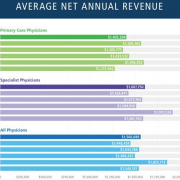Obamacare, Primary Care Physician Demand & Streamlining the System
Primary care is a crucial part of our healthcare system, and some people feel that if primary care doctors were more readily available and affordable, we’d have healthier Americans, fewer Emergency Room logjams, and a healthier economy overall. When Obamacare was first being implemented, there were widespread predictions that the new program would cause a surge in demand for primary care physicians—to the point of possibly crashing the system. Nearly a year later, how are we doing?
Not too bad, according to Phil Galewitz of Kaiser Health News. Wrote Galewitz in a recent article:
“Five months into the biggest expansion of health coverage in 50 years — with about 13 million people enrolled in private insurance and Medicaid under the Affordable Care Act — there are few reports of patients facing major delays getting care, say officials from more than two-dozen health centers and multigroup practices, as well as insurers and physician groups in nine big states.”
He does mention, though, that there are some exceptions, particularly in parts of states like Colorado, Kentucky and Washington, places that received some of the biggest gains in coverage.
But according to Richard Migliori, M.D., and Grace Terrell, M.D., there are still many heavily bottlenecked areas. In a recent KevinMD.com blog post, they write that many Americans still lack easy access to primary care:
“Approximately 50 million Americans live in areas, mostly rural, with too few primary care physicians. And a new report released by the UnitedHealth Center for Health Reform & Modernization shows that socioeconomic factors help explain this geographic variation in supply. Even in more urban areas, primary care physicians tend to practice in higher-income areas where individuals are more likely to have insurance coverage.”
“If current trends continue, the shortage of primary care providers is likely to get worse. Only about one in three physicians practice primary care. As demand for primary care increases due to expanded insurance coverage and an aging and sicker population, only one in six medical graduates is choosing primary care.”
There is good news, though, and that is that there are proven methods to help ensure all Americans have access to primary care physicians. Doctor Migliori and Doctor Terrell recommend expanding the roles of nurse practitioners and physician assistants, assembling multi-disciplinary care teams, and using health information technology (HIT) to make information sharing more efficient and effective. Read more about their recommendations here.
Care to join the debate? How do you feel Obamacare has (or hasn’t) impacted primary care physicians and the patients who need them? What more do you think could be done to improve the situation?










